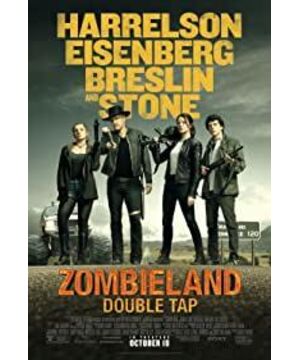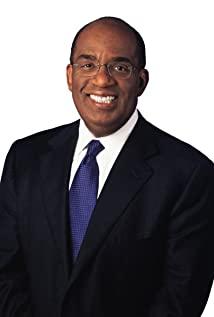Zombie films have blurred boundaries and can be regarded as sub-types or mixed types of horror films, disaster films, and science fiction films.
Since its inception, zombie movies have not been considered mainstream.
However, because of its unique character image, stimulating scenes and "evil taste" aesthetic feeling, it has a group of loyal fans all over the world.
At the end of 2019, a sequel to a zombie movie that has been around for 10 years finally came to the audience.
That kind of simple and rude happiness also accurately poke the fan's G-spot, and successfully set off a small climax of the topic.
The Korean zombie film "Wonderful Family", which was released almost at the same time, tried to break genre conventions on the basis of continuing the American zombie film genre rules.
It reverses the law that zombies bite and turns people into zombies, creating a precedent for normal people to bite zombies and turn zombies back into normal people.
And the film incorporates Eastern ethics such as family-oriented, causal reincarnation, etc., and reflects the aesthetic purport that is very different from that of American zombie films.
In this issue, I will review the development of American zombie films and the local style of Asian zombie films.
-01-
Embryo: The Legend of Voodoo
In 1932, America's first zombie movie "White Zombie" was released.
Since then, a new term-zombie has appeared in the history of film.
The word zombies is derived from the word Nzambi in Haitian voodoo culture, which means the undead of the dead.
In the voodoo culture, it is said that the dead can be awakened by voodoo wizards through certain religious rituals and become slaves created and controlled by voodoo witchcraft with slow movement, loss of memory, involuntary power, and body decay.
"White Zombie" is adapted from the travel monograph "Magic Island" by occult writer William Seabrook (William Seabrook).
In 1929, William Seabrook recorded his travel experience in Haiti into the book "Magic Island", introducing the zombie culture derived from Haiti's voodoo to Western readers for the first time.
The book has a clear orientalist perspective, exaggerating the religious ceremonies in Haiti as witchcraft and demon worship, and describing zombies as puppet slaves who have died and resurrected by dark magic, working day and night like livestock.
"White Zombie" is directed by Victor Harprin, starring Bella Lugosi, March Bellamy and Robert Fraser.
After its release, "White Zombie" closed at the box office of nearly $8 million with 200 times more than the production cost of the film. This is definitely a miracle in the United States, which is still in the Great Depression.
As a result, American zombie movies began to rise rapidly, and their representative works include:
During World War II, almost all commercial film production in other countries except the United States was at a standstill.
The commercial film system in the United States is still operating, but it is inevitable that the themes come first. The overall view is thin and rough production.
Two zombie films in this period, "The King of the Zombies" and "The Revenge of the Zombies," showed the Nazi scientists' attempts to establish an army of the living dead to achieve the rise of the Third Reich.
After World War II, with the advent of the space age, nuclear radiation anxiety, the US-Soviet Cold War, and alien creatures became the themes of American culture during this period.
In this cultural environment, the traditional monsters of the Gothic era such as vampires, werewolves, and Frankenstein were eclipsed, while zombies without religion have become the most convenient monsters to integrate with these modern topics.
Zombie movies in the 1950s can basically be classified into the category of B-level movies, the most famous is "The King of Bad Movies" Ed Wood's "Outer Space Project 9".
Until the advent of "Night of the Living Dead" in 1968, zombies in American movies have always appeared as manipulated slaves.
The images of these puppet zombies have three major characteristics:
Controlled by others
Resurrected dead
Occupied body
-02-
Formation period: Zombie Siege
The prelude to the modern zombie movie was "Night of the Living Dead" in 1968, which caused a sensation once it was released, which really brought the zombie movie to glory.
The zombies in the film are no longer pitiful coolie images, but jump out of the voodoo quarrel, from the early gloomy and cold corpses to the horrible images of rotting limbs and biting living people.
In this movie, zombies appear as a large number of supernatural threats, invading human society in the form of siege, and attacking and devouring humans.
Director George A. Romero is also known as the "father of zombie movies."
The birth of "Night of the Living Dead" around 1968 was a special era. The Cold War, the Vietnam War, the anti-war movement, the sexual liberation movement, all kinds of international issues and social conflicts superimposed together, making it a "angry" era.
The protagonist was originally a black man. He was the leader of many survivors in the cabin, and he dared to slap white women. These were extremely controversial images in movies and TV at the time.
In the end he was shot to death as a zombie-he didn't even do anything, just looked out the window in the house.
What is quite symbolic is that it was the same year that the black movement leader Martin Luther King was assassinated, which gave the film a room for interpretation.
Afterwards, George Romero launched "Dawn of the Dead" and "Day of the Dead" in 1979 and 1986, which constituted his famous "Zombie Three". Part".
"Dawn of the Living Dead" tells the struggle between humans and zombies trapped in a large supermarket. It is a bitter irony of the Americans who were trapped in the quagmire of consumerism, material wealth and spiritual decadence after the Vietnam War.
In "Day of the Living Dead", zombies have spread all over the world, and the surviving human beings are in desperation, lonely and helpless, alluding to the decadence and lack of confidence of modern people who have lost confidence in the future during the Cold War under the gloom of nuclear threats. Help and despair.
The three films all explored American social issues to varying degrees, so that American zombie films began to have the functions of mirroring reality and social fables.
More importantly, the invasive zombie film created by the "Zombie Trilogy" provides a model for the creation of zombie films for later generations, both in narrative structure and audio-visual language, and subsequent zombie films basically continue this model:
Unexplained resurrection
Zombies have no self-awareness and rely solely on biological instincts to chase humans and eat flesh and blood
Zombie bites are contagious and can replicate new zombies in batches through gnawing
Zombies will not die unless they are headshot or burned to death
In the 1980s, film and television special effects and makeup technology became more advanced, coupled with the influence of postmodernism and deconstructionism, zombie films gradually went further and further on the bloody and brutal road based on Romero's established genre.
Representative works are:
It is said that during the release of "A Group of Corpses in the World", movie theaters in many areas specially prepared vomit bags for the audience to prevent physical and mental discomfort.
-03-
Differentiation period: zombie also trench / sand sculpture / gentle
After the new century, zombie films entered the "post Romero era", and the types and styles of zombie films began to become more diverse.
"Resident Evil" was released in 2002, and since then opened the "luxury" era of zombie films.
Blockbuster films such as the "Resident Evil" series, "I Am Legend", and "Zombie World War" have won both box office and word of mouth harvests all over the world.
American zombie movies are also brewing, fermenting and taking root in the global cultural ecology, resulting in a variety of derivatives: such as "Zombie Culture Festival", zombie-themed bars, including the zombie game "Plants" that even children are fascinated by. "Zombies" and so on.
The unique artistic charm and huge commercial value of zombie movies have begun to manifest.
The one represented by "Zombie Shaun" deliberately went against the genre, taking pleasure in breaking the narrative conventions of zombie films and the audience's expectation.
Before, zombie movies were at best as evil as "Zombies Played in the World". It was not until 2004 that "Zombie Shaun" really played a high-quality comedy style of zombie movies.
From then on, the zombies no longer displayed disgusting, cruel, and ugly images from beginning to end, and began to be a little cute.
Not only that, the zombies also talked about love.
Known as the zombie version of "Twilight", "Gentle Corpse" tells the story of zombies returning to their hearts and regaining their emotions.
Zombies began to be given more human emotions, and zombie films were also given more cultural attributes.
-04-
Zombie films in Asia
Zombie films appeared relatively recently in Asia, but the influence of Asia on the world's zombie culture should not be underestimated.
In 1996, Japan's CAPCOM company launched a series of games "Resident Evil" that is popular all over the world.
The game series has a huge and far-reaching influence on zombie-themed film and television works worldwide.
The creation of Japanese zombie films is mainly concentrated after 2000.
It started with "Rock and Roll" in 2000, especially in recent years, "Miss Zombie", "Z Island" and "Call Me Hero" are of excellent quality and box office.
Japanese zombie movies incorporate elements of Renxia gangster movies and related content of otaku culture, so that the type of zombie and the local culture can reach a certain degree, established and developed.
In Asia, there are a lot of similarities between a category of movies and zombie movies, and that is Hong Kong's zombie movies.
"Zombie", the corresponding English word is also Zombie.
Therefore, in many cases, "zombies" and "zombies" are mixed. For example, it is more appropriate to change "zombies" to "zombies" in many titles mentioned in the previous article.
The zombies in Hong Kong zombie movies are usually stiff, with sharp black nails and sharp canine teeth. They feed on human blood or domestic animal blood. They stretch their hands forward when jumping. This is quite like a zombie resurrected by a wizard.
However, the characteristics of zombies fearing the sun, hiding in coffins during the day, and relying on mahogany swords to kill them are closer to Western vampires.
In addition, the zombie film’s appearance in Qing dynasty costumes and the themes such as reincarnation of cause and effect, punishing evil and promoting good are very Chinese, and they still maintain a large distance from zombie films. The two cannot be confused.
It can be said that the Asian zombie film benchmark can be said to be made in South Korea.
As early as 1980, South Korea filmed the first zombie film "Monster".
However, the plot of this film imitates the zombie film "Zombie Cemetery" co-produced by Spain and Italy in 1974, and the image of the zombies draws on the zombies in Hong Kong movies.
To put it better, it is a combination of Western themes and Eastern expressions;
To put it bluntly, copy half of each side, nothing new.
After entering the new century, with the gradual maturity of the Korean film industry, zombie films began to emerge and occupy a place.
In 2006, South Korea launched the second zombie film "Suddenly One Day in the Black Forest", which largely imitated the Japanese action film "Millennium Duel".
After that, films such as "Zombie Next Door", "Mr. Zombie", "Brave New World", and "Zombie High School" were successively released, and the exploration of the localization of Korean zombie films began.
The zombie movie "Travel to Busan", which was released in July 2016, blows out at the box office, with more than tens of millions of viewers in South Korea, becoming the fourteenth "ten million movie" in the history of Korean cinema.
The film was widely acclaimed in Asia and became a well-deserved banner of Asian zombie films.
"Travel to Busan" cleverly borrowed from the genre of American zombie films, and incorporated Eastern ethics and morals, worldliness, and even karma; it does not avoid the ruthlessness of zombies, and expresses tender and poetic emotions, torturing the humanity in front of life and death, and in sadness. Full of human warmth and salvation.
Different from the promotion of personal heroism in American zombie films, Korean zombie films deliberately portray the reactions and choices of ordinary citizens when disasters come and zombies attack the city.
In "Travel to Busan" and "Wonderful Family", the main characters cover the age groups of the old, middle and young, and there are sick and disabled pregnant people.
The director tried to establish a reduced version of the human society in the film, in order to complete his own discussion of human nature and social issues.
Shi Woo, the actor of "Travel to Busan", took his daughter on the train to Busan to satisfy her daughter's desire to see her long-lost mother;
Muscle Uncle Shang Hua's care and protection of his pregnant wife Sheng Jing is an act of guarding family members;
The middle-aged and elderly sisters in the branch characters are also set with the family's affection as an emotional maintenance character;
Rongguo and Jinhee’s seemingly childlike love affair with high school students, but they interpret a poignant love story in which they die in love;
Even Kim Changwu, the biggest villain in the film, ran away unscrupulously just to be able to go back to see his mother. He is also a character whose main appeal is family.
The "family orientation" in the plot and character image molding more reflects the unique emotions and ethics of the Eastern nation.
In the presence of various media, zombie culture has become an important branch of the global youth subculture.
Max Brooks, the author of the novel "Zombie World War", even wrote an academic book called "Zombie Survival Guide."
"Zombie Survival Guide" is a complete guide to teach people how to survive in a world where zombies are rampant. From choosing weapons to making escape plans, from defending at home to proactively attacking, from storing food to choosing transportation, the author has done something. No detailed guidance.
If you are interested, you can send a private message, what if you can use it?
The main reference for this push:
Wang Shuzhen: "The Past and Present of Western Zombie Culture"
Yao Rui: "Genre Evolution, Doomsday Imagination, and Subcultural Wonders-Features and Development of American Zombie Movies"
Zhang Yan: "The Type Exploration and Social Metaphors of Korean Zombie Movies"
Shao Tong: "Japanese Zombie Film Research"
Xiong Xiao: "On the Cultural Anxiety and Pleasure Construction of Contemporary Zombie Movies"
Author: Yaning
Editor: Yaning
Picture: Network
View more about Zombieland: Double Tap reviews











